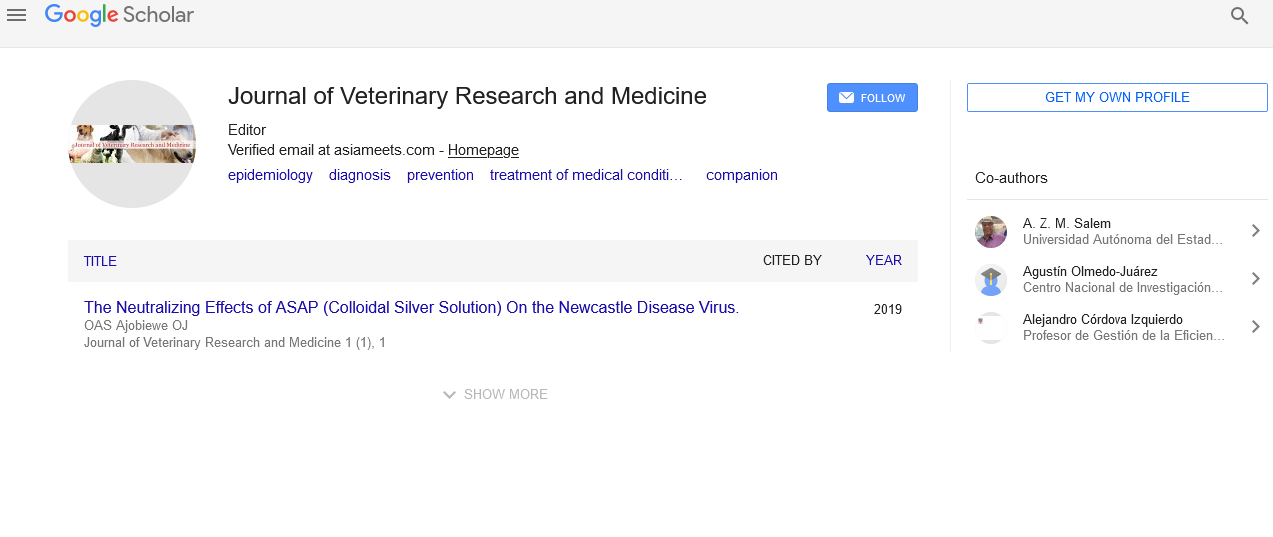The essential dietary elements and their role in animal nutrition
Received: 04-Oct-2021 Accepted Date: Oct 18, 2021; Published: 25-Oct-2021
Citation: Bahir S. The essential dietary elements and their role in animal nutrition. J Vet Res Met 2021;3(2):2.
This open-access article is distributed under the terms of the Creative Commons Attribution Non-Commercial License (CC BY-NC) (http://creativecommons.org/licenses/by-nc/4.0/), which permits reuse, distribution and reproduction of the article, provided that the original work is properly cited and the reuse is restricted to noncommercial purposes. For commercial reuse, contact reprints@pulsus.com
Description
The animal diet is the source of substances needed for constructing DNA and different complicated molecules needed for growth, maintenance, and reproduction; together those techniques are referred to as biosynthesis. The diet is also the supply of substances for ATP production in the cells.
The essential components of protein are nitrogen-containing amino acids. Essential amino acids can't be made through the animal. Some of the amino acids are convertible (with the expenditure of strength) to glucose and may be used for energy production simply as regular glucose. By breaking down existing protein, glucose may be produced internally; the ultimate amino acids are discarded, in most cases as urea in urine. This happens generally only at some stage in extended starvation.
Dietary fiber is a carbohydrate (polysaccharide or oligosaccharide) this is incompletely absorbed in a few animals.
Proteins are the basis of many animal body structures (e.g. muscles, skin, and hair). They additionally shape the enzymes which manage chemical reactions all through the body. Each molecule consists of amino acids which might be characterized through the inclusion of nitrogen and every so often sulfur. The body requires amino acids to provide new proteins (protein retention) and to update broken proteins (maintenance). Excess amino acids are discarded, normally in the urine. For all animals, a few amino acids are vital (an animal can't produce them internally) and a few are non-vital (the animal can produce them from different nitrogen-containing compounds). A diet that includes adequate quantities of amino acids (in particular those which can be critical) is especially crucial in a few situations: at some stage in early improvement and maturation, pregnancy, lactation, or injury (a burn, for instance). A few amino acids from protein may be transformed into glucose and used for gas through a technique referred to as gluconeogenesis; that is accomplished in the amount best at some stage in starvation.
Dietary minerals are the chemical factors required through residing organisms, apart from the 4 factors carbon, hydrogen, nitrogen, and oxygen which can be found in almost all organic molecules. The term "mineral" is archaic because the cause is to explain certainly the less common factors in the diet.
Many elements are vital in relative amount; they may be typically known as "bulk minerals". Some are structural, however many play a function as electrolytes. These consist of calcium, a common electrolyte, however additionally needed structurally structural (for muscle and digestive gadget fitness, bones, a few forms neutralize acidity, might also additionally assist clear toxins, and offer signaling ions for nerve and membrane functions). Chlorine as chloride ions; very common electrolyte. Magnesium, required for processing ATP and associated reactions (builds bone, causes sturdy peristalsis, will increase flexibility, will increase alkalinity). Phosphorus required an element of bones; important for strength processing. Potassium, a totally common electrolyte (coronary heart and nerve fitness). Sodium, a completely common electrolyte.
Vitamin deficiencies might also additionally bring about disorder conditions. Excess of a few vitamins is also risky to health, and animal nutrition researchers have controlled to set up secure ranges for a few, common companion animals. Deficiency or excess minerals also can have severe health consequences.
Animal intestines contain a massive population of intestine flora which might be important to digestion, and also are affected by the food eaten.





